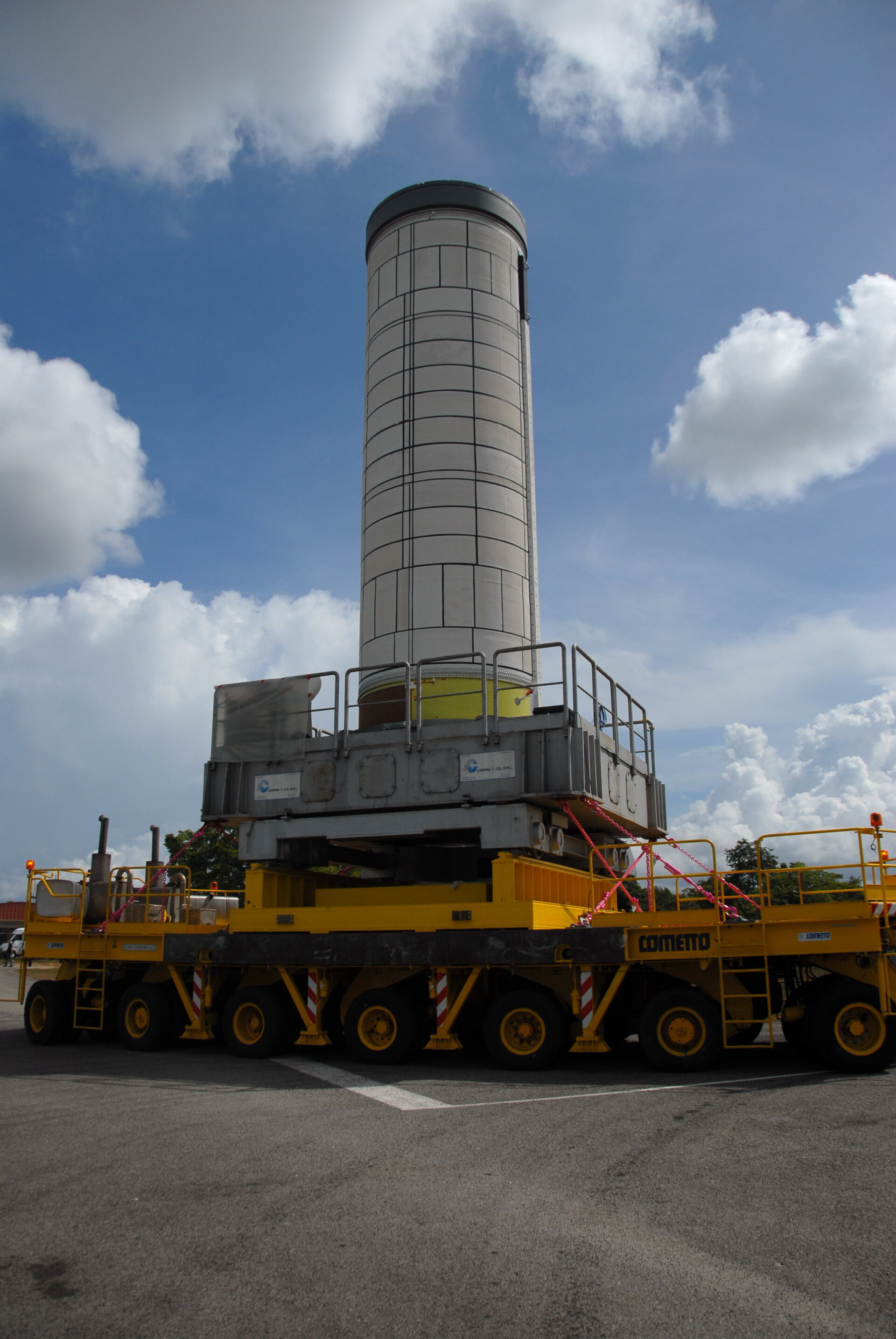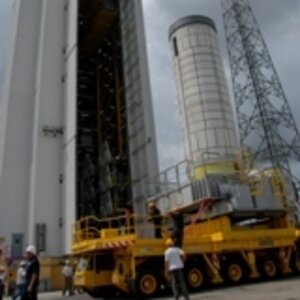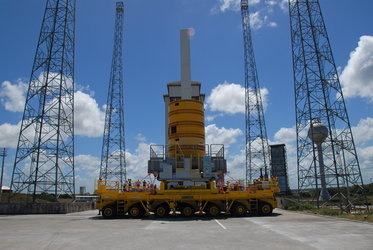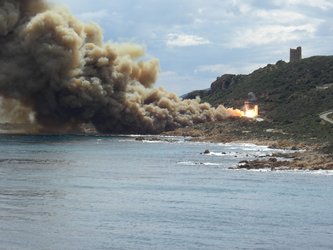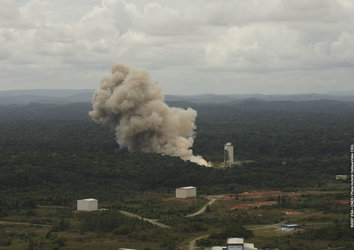Vega test campaign starts at Europe’s Spaceport
A mock-up of Europe’s Vega launcher first stage was transferred on 26 October from the Booster Integration Building to the Vega Launch Zone at Europe’s Spaceport in French Guiana.
This marks the first step towards the operational readiness of the Vega launch system and paves the way for next year’s qualification flight.
The start of the combined testing phase involved the mechanical validation of several elements of the launch vehicle and the ground segment.
The model of the first stage includes the P80 solid-propellant rocket motor and the Interstage-0/1 structure that attaches to pad.

The stack, with a total mass of 135 t and a height of about 15 m, was transferred to Vega’s mobile gantry, where launch preparations take place.
After rolling out the first stage in the launch position on the lower pallet, the operations were completed with the upper pallet safely anchored to the launch table.
“The mechanical combined tests have started with this transfer. This is a first step in the operational qualification of the Vega launch system and an important milestone towards the qualification flight,” said Stefano Bianchi, ESA’s Vega manager.
The Flight Readiness Review will give the final green light for Vega’s qualification flight.

“This important result was achieved thanks to the dedication, the competence and the common effort of the industrial teams, namely ELV SpA, Vitrociset, Regulus, Europropulsion, Carlo Gavazzi Space and Rheinmetal, and also the CNES teams, the ESA Integrated Project Team and Arianespace,” said Renato Lafranconi, responsible for the combined test campaign at ESA.
About Vega
This century began with a significant interest in smaller satellites, in particular for scientific and Earth observation missions. In order to provide an affordable response to European needs and to maintain its competitiveness in the world's launcher market, Europe has developed Vega.
Vega will be able to inject payloads into a low polar orbit (300 km to 1500 km). With a height of 30 m and a diameter of 3 m, it will be able to place a 1.5-tonne payload into orbit.
Vega’s three solid-propellant stages (P80, Zefiro-23 and Zefiro-9) are topped by the AVUM liquid-propellant stage. Unlike most small launchers, it will be able to place multiple payloads into orbit.
Altogether, seven ESA Member States (Italy, France, Spain, Belgium, the Netherlands, Switzerland and Sweden) are contributing to the programme. The industrial prime contractor is ELV SpA, 70% of which is owned by AVIO SpA and 30% by the Italian space agency, ASI.


